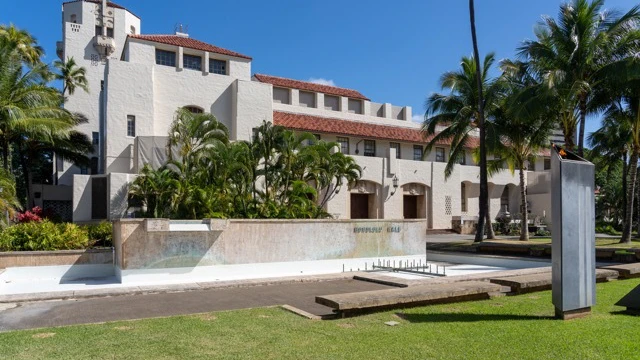Visitors to Hawai‘i will see their hotel bills grow next year after Gov. Josh Green signed into law a statewide green fee on Tuesday.
In what the governor called a landmark moment, Green signed SB 1396, which increases the state’s existing Transient Accommodations Tax by 0.75 percentage points.
Green said the tax hike is estimated to generate more than $100 million per year, which will be used to fund various climate change resiliency programs.
“For every $400 [a visitor] spends, $3 will come and help us deal with our climate change impacts,” Green said at a Tuesday media conference. “It’s a relatively small number, but they will see benefits that far exceed the expense.”
Green said the bill was partly modeled after a similar policy in Palau, which imposes a green fee on all airline passengers leaving the state. Hawai‘i's version — which Green said is the first in the U.S. — simply increases the current TAT from 9.25% to 10% beginning Jan. 1, 2026, and also for the first time applies TAT to cruise fares for ships docked at Hawai‘i ports.
“We can’t just tax the local people anymore,” Green said. “It’s very difficult for people to pay their rent, to attract nurses and teachers to Hawai‘i so we had to have a different mechanism.”
Green said some version of the proposal has been in the works for more than two years, but, in his view, the 2023 Lahaina wildfire highlighted the need for improved resiliency as climate-related disasters become more frequent.
The bill states that the funds from the tax hike will be used for projects to protect and manage the state’s natural resources, increase the state’s resilience to climate-based natural disasters, and improve the visitor experience such that the state’s natural resources are preserved for future generations.
What those specific projects will be has yet to be determined. Chris Benjamin, chair of the state’s Climate Advisory Team, said his team and legislators will review project proposals to determine the best use of the TAT revenues.
“If we can’t come together and find a way to identify a compelling list of projects that this money can be spent on, then we will have dropped the ball at the five-yard line,” Benjamin said.
Green said the legislature will come up with an updated plan each year to determine where the revenues will go. But he suggested that projects such as beach restorations, particularly along shores popular among tourists, could be funded out of public interest.
Waikīkī Rep. Adrian Tam noted that Hawai‘i's tourism industry relies on branding — e.g., pristine beaches, lush forests, etc. — and that the industry will struggle as the environment that makes up that branding degrades.
Whatever projects are selected, Green said funds should be made available for projects beginning next year.
Green touted cooperation by “hotel leaders,” who he said ultimately made a difficult choice to “look at the greater good for the future of tourism, the greater good for the people of Hawai‘i, the greater good for the planet.”
Despite this, many representatives of the hospitality industry were fairly vehemently opposed to the bill during the legislative session. John Pele, executive director of the Maui Hotel and Lodging Association, warned in an April letter that increasing the TAT even further will only slow the state’s recovery from the impacts of the Lahaina fires and COVID-19, and diminish Hawai‘i's “competitiveness in the global tourism market.”
Department of Land and Natural Resources Chair Dawn Chang claimed in her own April letter that Palau’s green fee has had no significant impact on visitor rates.
Ultimately, Green said the bill represents a major step toward meaningfully addressing climate change and hopes that it can serve as a model for other states or nations.
“It really has the capacity for us to deal with climate change,” Green said. “For those of you out there across the planet who are watching, find out your best path to raise resources in a smart way to deal with climate change for your people.”





